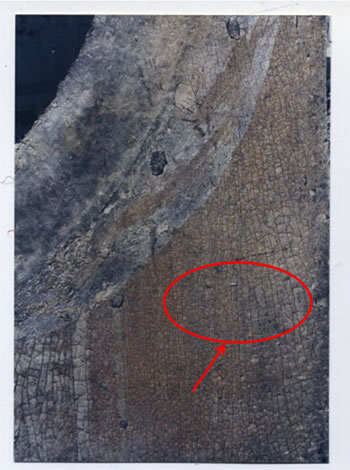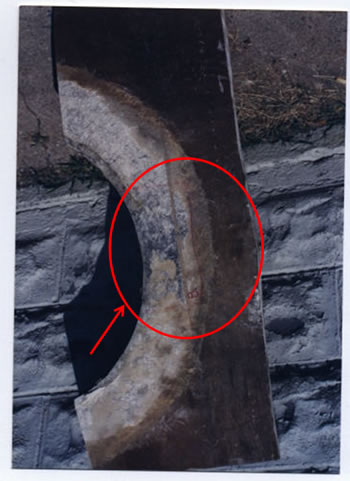Catastrophic failure with death
One 20,000-gallon tank 12-ft diameter storing ammonium sulfite at an average laminate temperature of 105 degrees F. to 130 degrees F. with a specific gravity of 1.05 was changed to a more severe environment of ammonium sulfite and ammonium bisulfite in equilibrium operating at 180 degrees F with a specific gravity of 1.27. The tank was operated for 8 years with the initial environment. After setting idle for two years, the tank was sold to a new company which changed the operating conditions. After an additional 10 years of service at the more severe conditions, the tank failed catastrophically killing one person who had noticed a leak and closed a valve on the tank.
A forensic investigation revealed the following:
The original design called for a dual resin system, but this was not done. The new environment and higher operating temperature was much more severe. The new company added 2 inches of foam insulation to the tank causing the average laminate temperature to be about 50 degrees F. higher. Failure occurred at a manway that had been moved and reinstalled, by popping out while operating full, resulting in the tank imploding due to the quick discharge by pulling a vacuum on this tank.
Lessons Learned
- Always conduct a thorough review of the tank design and construction before changing service.
- Repairs and modifications should be done only be well-qualified and experienced FRP technicians using correct resin and fiberglass reinforcing that are appropriate for this environment.
- Contact the manufacturer for approval of new service and/or if not available, engage the service of a well-qualified consultant to review and make recommendations.




